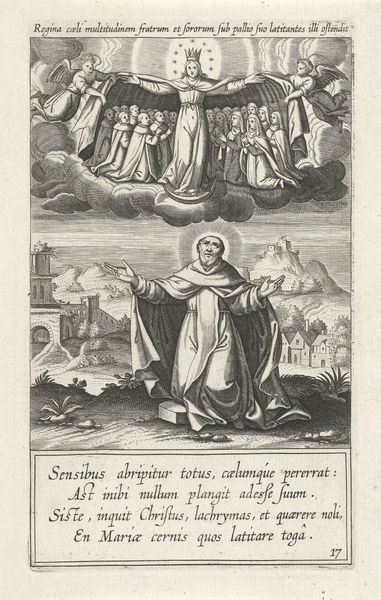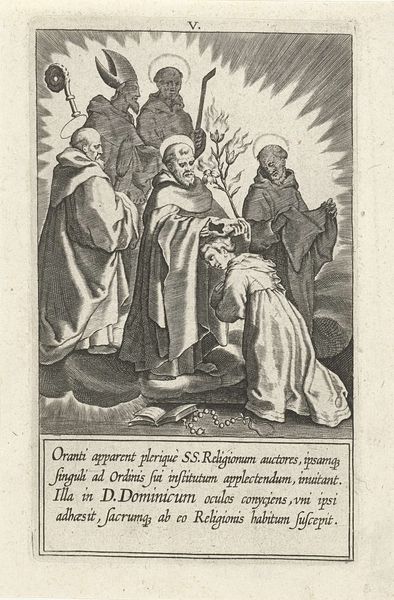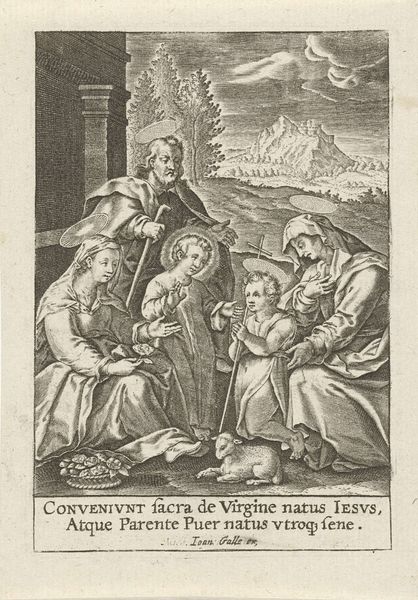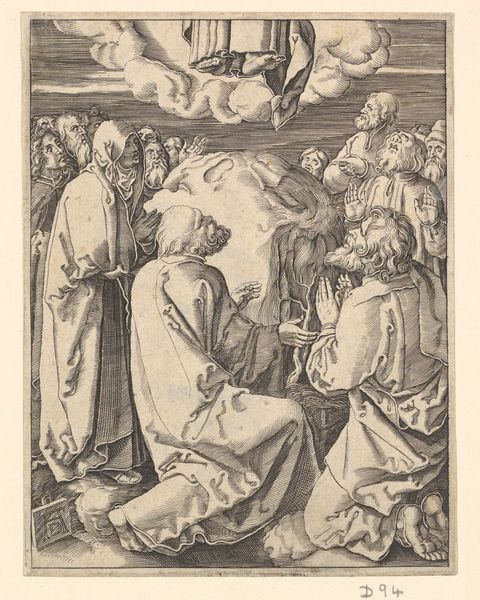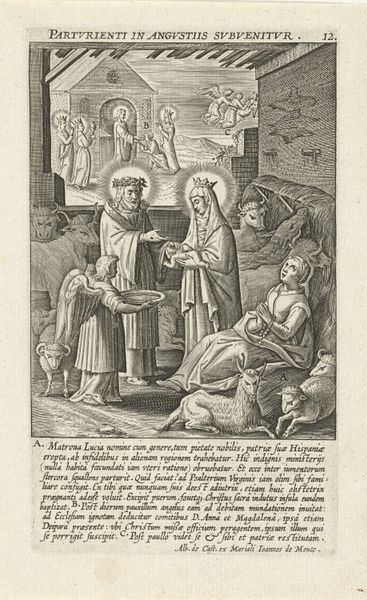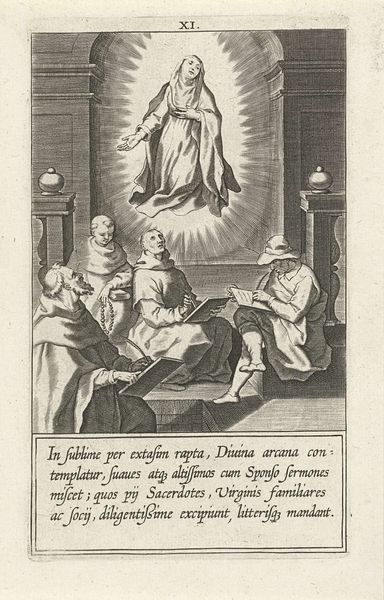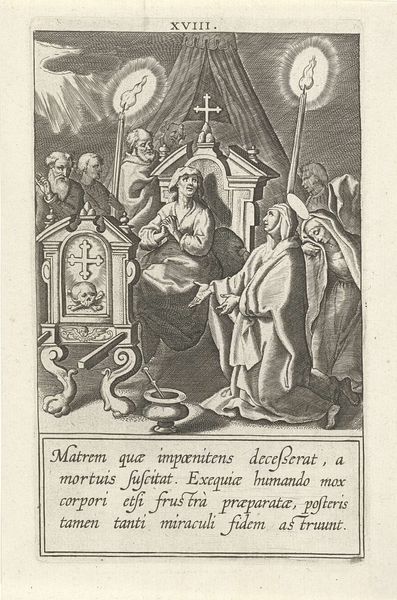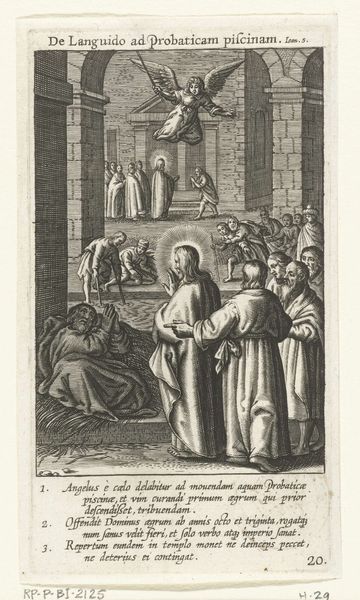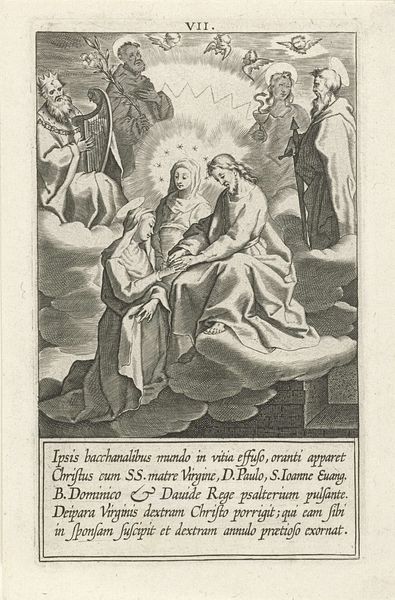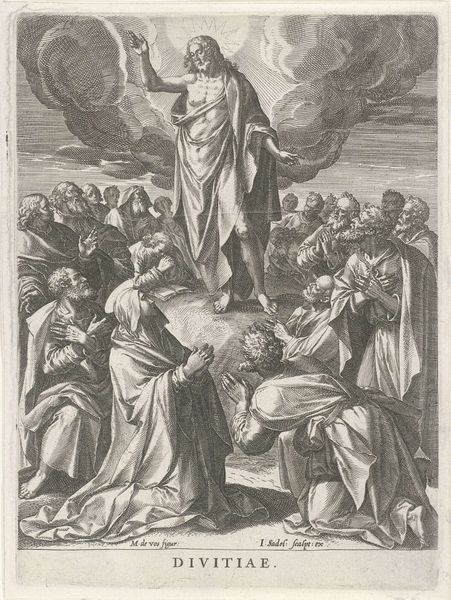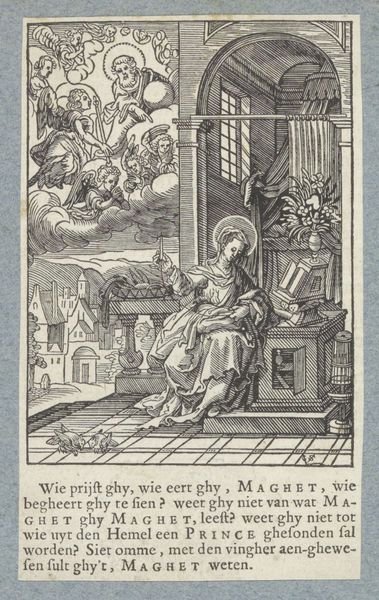
print, engraving
#
baroque
# print
#
old engraving style
#
figuration
#
line
#
history-painting
#
engraving
Dimensions: height 150 mm, width 90 mm
Copyright: Rijks Museum: Open Domain
Editor: This print, titled "Catharina ontvangt de communie van Christus," was created in 1603 by Cornelis Galle I and is held at the Rijksmuseum. The fine lines of the engraving really draw me in; it almost feels like a sacred scene captured with great detail. What stands out to you when you look at it? Curator: What immediately commands attention is the interplay of light and shadow, carefully delineated by the artist's skillful employment of line. Notice how the engraver uses hatching and cross-hatching to articulate form and create tonal gradations, moving the eye across the composition, from the earthly realm occupied by the priest and attendants to the celestial apparition of Christ bestowing communion. The composition achieves balance using these precise graphic articulations. Editor: So the technical elements are crucial to how we read this piece? Curator: Precisely. The linear precision and detailed rendering typical of engraving are paramount here, reflecting not merely a narrative but also an exercise in the very properties of line as a formal device. Galle's technique shapes our viewing experience, subtly guiding our interpretations. Note that the varying densities create emphasis. How does this affect the subjects depicted in the artwork? Editor: It spotlights Christ and Catharina; they are indeed more prominent. Curator: A great insight, highlighting how technique drives the overall aesthetic. In other words, this is where content aligns with formal elements and that determines our aesthetic reaction. Editor: So focusing on the technique helps reveal its significance beyond just religious illustration, adding aesthetic intent to the spiritual narrative. Curator: Precisely. That the meticulous structure emphasizes the visual dynamic. The work beautifully reflects form and content, thus elevating both.
Comments
No comments
Be the first to comment and join the conversation on the ultimate creative platform.
